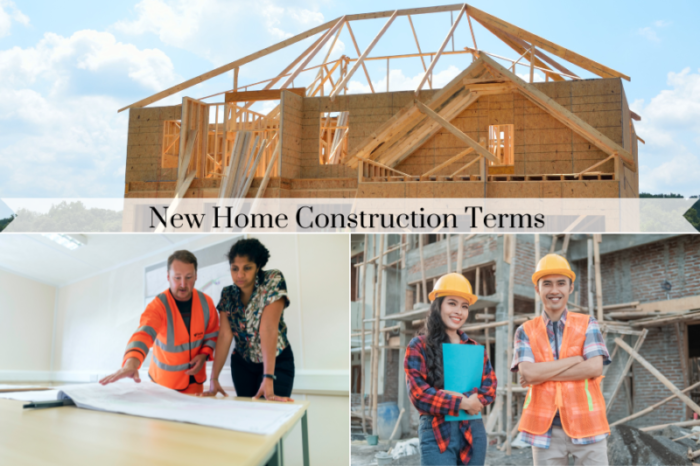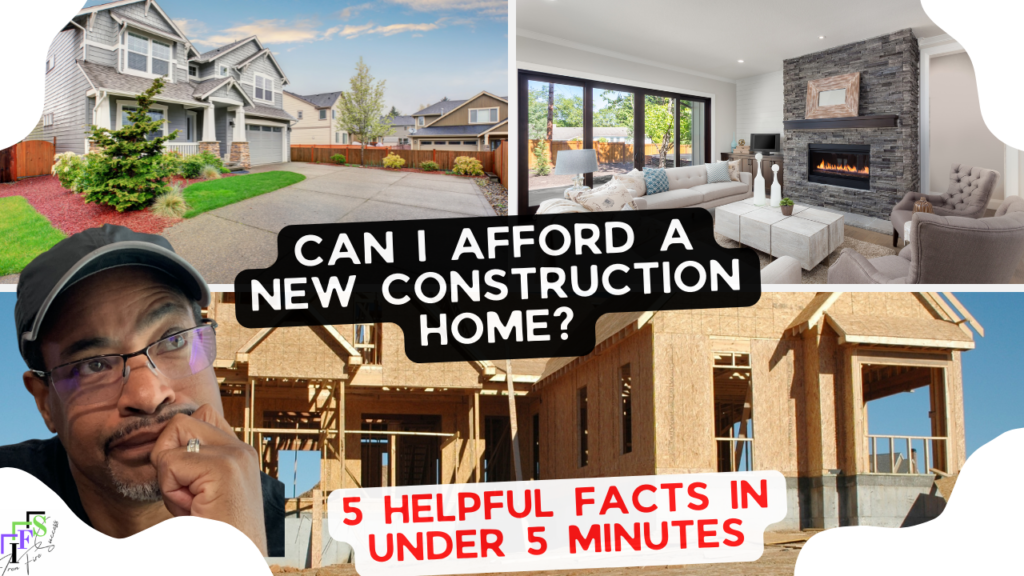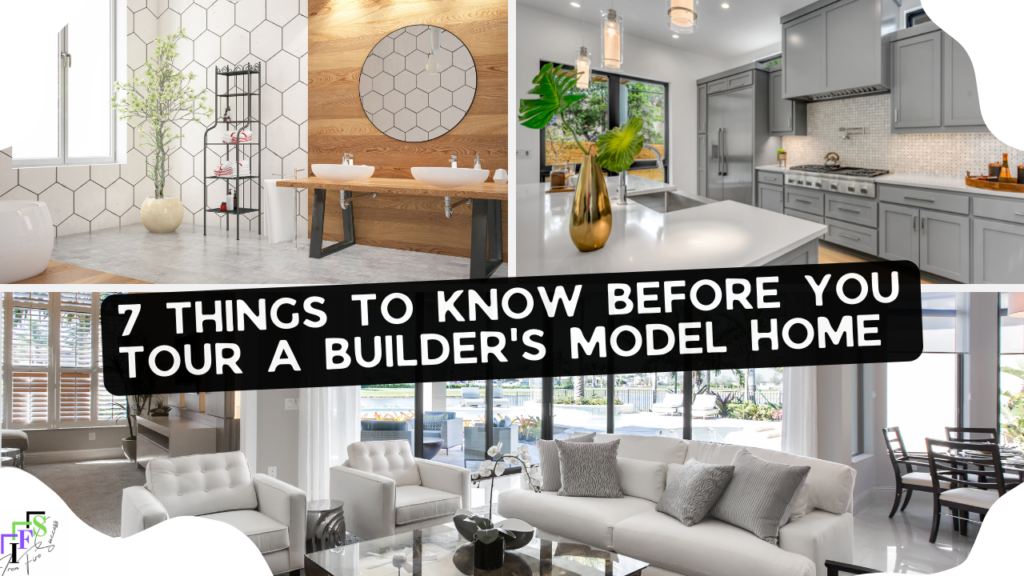Whether you plan to build a modest production home or a complex custom home, you need to know some fundamental home construction terms. Through building our custom dream home, my husband and I learned that the world of new home construction has its own language.
Knowing these home construction terms and meanings will give you the knowledge to ask better questions, and get more out of your model home visits. More importantly, knowing these commonly used home construction terms will help you evaluate the builder‘s offerings, and understand the building process. Disclaimer – I do not work in the real estate industry! I wrote the definitions of these terms the way I understand them. Check out our Video Essential Financial Terms Explained for an explanation of these and more terms in an easy to follow roadmap of the New Home Construction Process.
These are the 17 Fundamental New Home Construction Terms You Need to Know!
- Allowance – an amount of money allocated in the contract to cover an area of the building project where the exact cost is yet to be determined. Custom home builders frequently use allowances to set aside an amount of money in the contract to cover areas like kitchen appliances, bathroom fixtures, flooring, and tile. The buyer uses the allowance as the “budget” when choosing the exact items later. The buyer pays for any overages if the selected items exceed the allowance amount.
- Appraisal – an estimate of the expected value of the finished home based on the lot size, home square footage, materials, and comparable homes in the neighborhood. A lender will require an appraisal to determine the value of the finished home as part of their lending decision.
- Base Price – the builder’s starting point for the price of the home. The base price includes the standard lot price, as-is floor plan, and features included in the contract, before adding in any options such as lot premiums, elevations, changes to the floor plan, or upgrades.
- Builder Warranty – Many new home construction builders typically offer a one-year (or two-year) warranty on materials and workmanship. Builders usually offer a longer warranty on plumbing, HVAC, and electrical, and 10-year structural warranties. The contractors who worked on the home may not do the warranty work, and outside companies contracted with the builder may manage the claims.
- Change Order – a request the buyer makes to change something after the contract is signed. Change orders are a useful tool for the buyer to add in something they forgot, or change something they don’t like, although too many change orders can delay the building project. Builders typically charge a fee for change orders.
- Deposit – a deposit is a partial pre-payment for certain parts of the building project such as design center upgrade choices, or landscaping. A deposit given to the builder at the time you sign the contract for the new home is called an earnest money deposit.
- Developer – the entity that purchases land, plans, and then develops the land for future use. The Developer can start the development process, get the plans, and permits approved by the municipality, and then sell the land to a Builder. The Builder then owns the land and starts new construction home building projects. In some cases, the Developer and Builder can be the same.
- Earnest Money – a type of deposit (also called a good faith deposit) that the buyer gives the builder at the time the buyer signs the new home construction contract with the builder.
- Elevation – the home’s exterior appearance as it appears in a design drawing that shows all sides of the house. The elevation design includes design elements such as roof line and pitch (slope), door and window placement, and the home’s materials (stone, stucco, brick, board and batten, etc.). Each elevation may have distinctive features that impact the home’s design elements. Builders may charge extra for a specific elevation.
- Incentive – a discount or credit the builder offers to encourage customers to build. The incentives can be something that would typically cost extra money that the builder waives, like a lot premium, or the cost of adding a room. Sometimes the incentives are builder credits toward a particular use, like $15,000 toward upgrades, or closing costs. Incentives can also be discounts on the price of the home for Veterans, or for using the builder’s preferred lender.
- Inventory Home – a home the builder has already completed and is for sale. These are also called spec homes.
- Lot Premium – the builder’s additional charge for a lot with desirable attributes such as more space, scenic views, backing up to trees or green space, or in a desirable location like a cul-de-sac.
- Master Planned Community – a large planned residential housing community development project that includes amenities to support the community like walking trails, fitness centers, pools, parks, and playgrounds. Some large master-planned communities may also have schools or shopping.
- Rough-in – this is the electrical, gas, plumbing, or mechanical prep work the builder does now to prepare for an addition you plan to make in the future. This is often called a “pre-plumb” when done for something like a laundry room sink, outdoor kitchen, or pool.
- SID/LID – SID is Special Improvement District. LID is a Local Improvement District. When a developer begins a large building project by developing raw land for building a master-planned community, the municipality (city or county) installs infrastructure such as electricity, lights, streets, a sewer system, and fire hydrants (also called improvements). The Developer can either pay for these things, add them to the sales price of each lot, or pass the buck to the whole community. If the community pays, the municipality creates an “Improvement District.” The improvement costs are divided among the residents in the SID or LID. The property owners must pay the SID or LID fee (monthly, semi-annually, or annually) for a pre-set number of years.
- Standard Feature – the typical design elements, features, and materials included in the base price of the home. The standard features offered by each builder vary in quantity and quality. The basic materials used by the builder for standard features are also commonly called “builder grade” materials.
- Upgrade – a change to the home structure such as adding a bedroom, increasing ceiling or door height, additional garage, extended patio, double front doors) or an interior design choice ( higher-end flooring, cabinets, countertops or appliances, decorative tile, or fixtures) that is a step above the standard features. The upgrade choices and prices vary among builders. The same builder will often offer different upgrades to different master-planned communities where they build homes.
Congratulations on building your new home construction vocabulary and knowledge base! You are off to a great start!
Add to your New Home Construction knowledge with our FREE New Construction Home Features Checklist! Just download and take it with you when you visit a model home or meet with a builder!
Best Wishes on Your New Home Journey!





